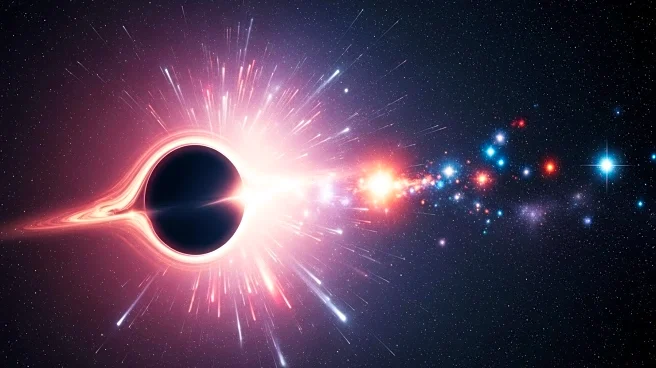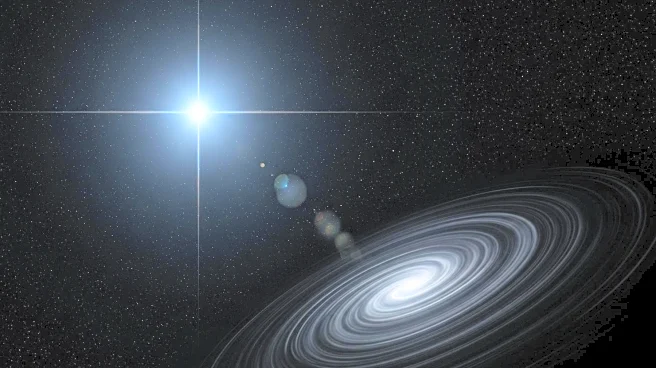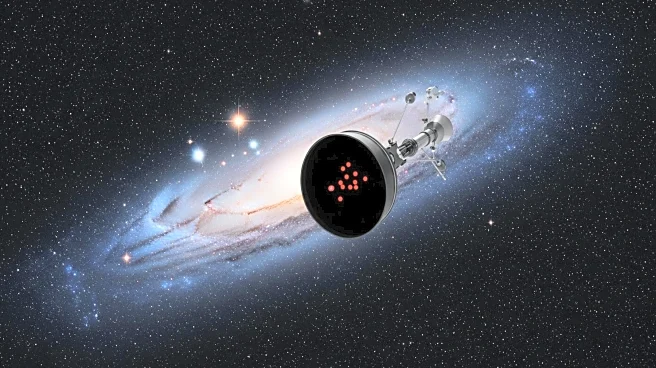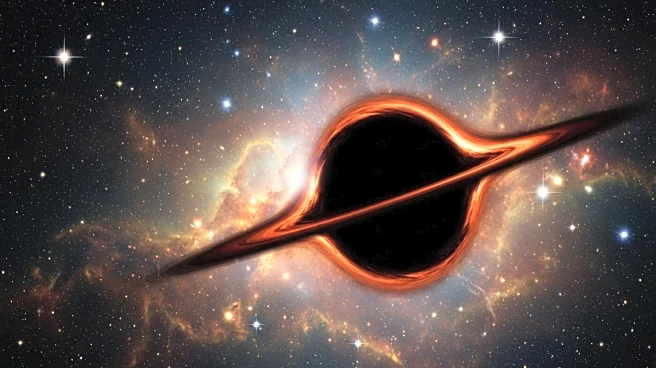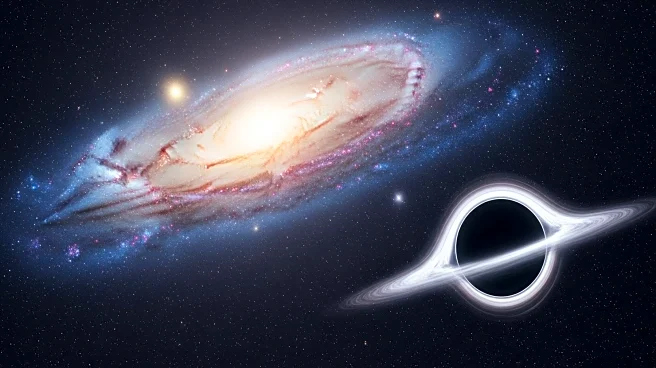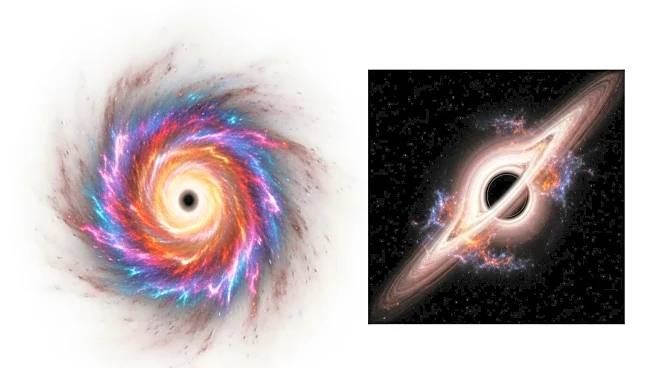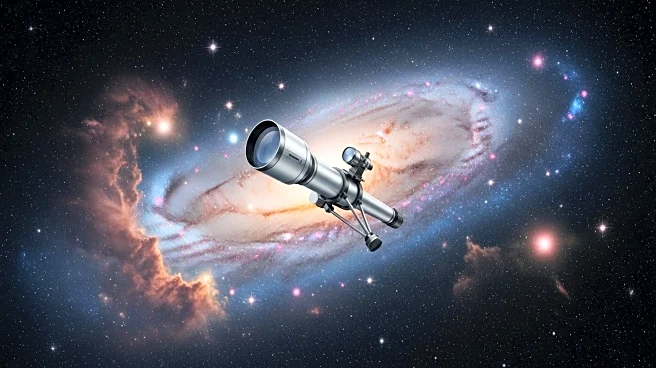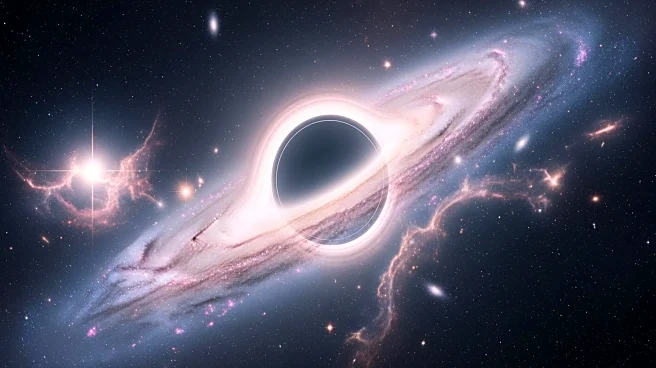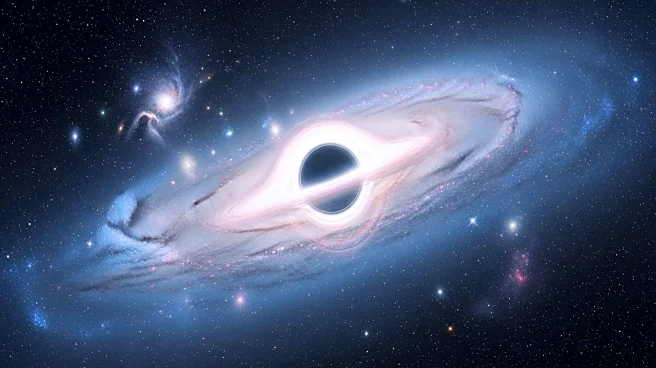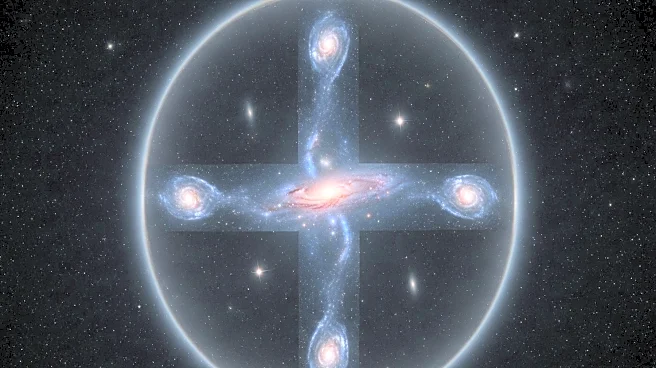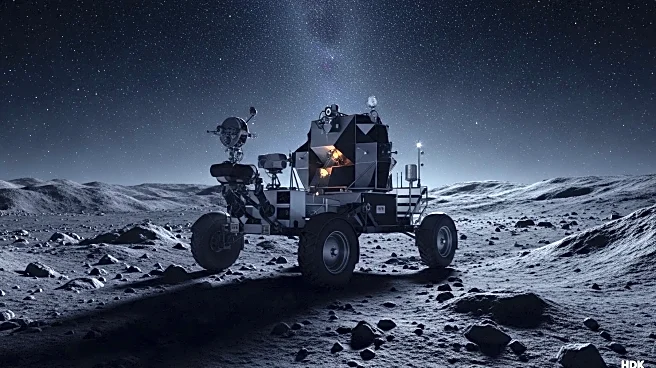What is the story about?
What's Happening?
MIT physicists have proposed that a recently observed high-energy neutrino may have originated from the final burst of a primordial black hole (PBH) near our solar system. This hypothesis, published in Physical Review Letters, suggests that the explosion of a PBH could produce high-energy particles, including neutrinos, detectable on Earth. Primordial black holes are theorized to have formed shortly after the Big Bang and may constitute a significant portion of dark matter. The study posits that such an explosion could account for the highest-energy neutrino ever detected, potentially providing evidence of Hawking radiation.
Why It's Important?
This study has significant implications for our understanding of dark matter and black holes. If primordial black holes are confirmed to exist and make up most of the dark matter, it could revolutionize our understanding of the universe's composition. Additionally, detecting Hawking radiation would provide empirical evidence for a key theoretical prediction about black holes. The findings could also help resolve the mystery of high-energy neutrinos, which have puzzled scientists due to their unknown origins.
What's Next?
Further research and observations are needed to confirm the study's hypothesis. Scientists will continue to monitor high-energy neutrinos and other cosmic phenomena to gather more data. If additional evidence supports the existence of primordial black holes and their role in producing high-energy particles, it could lead to new insights into the nature of dark matter and the early universe. Collaborative efforts across various observatories and research institutions will be crucial in advancing this line of inquiry.
AI Generated Content
Do you find this article useful?
